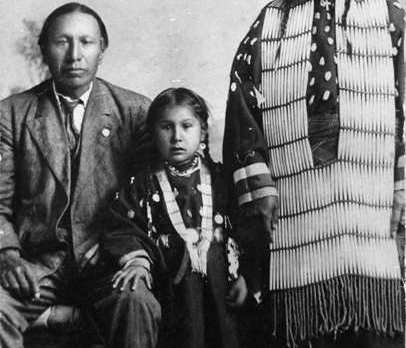Lenten Campaign 2025
This content is free of charge, as are all our articles.
Support us with a donation that is tax-deductible and enable us to continue to reach millions of readers.
This is pretty intriguing, via America:
In Our Lady of the Sioux, a small Catholic church in Oglala, S.D., George Looks Twice is waiting. Looks Twice, 83, holds a stick next to a drum that sits beneath his legs as the priest intones the eucharistic prayer. He is waiting for the point of consecration, where the bread becomes the Body of Christ. But instead of ringing bells, Looks Twice will strike the drum three times, the honor beats heard in the Sun Dance and other Lakota traditional songs. The drum will give honor to Jesus, whom the Lakota call Wanikiya, “He Who Makes Live.” In one sense, George Looks Twice has been waiting since 2012. In October of that year he was in Rome for the canonization of Kateri Tekakwitha, the 17th-century Mohawk woman who became the first Native American saint from North America. It was during that trip when Looks Twice first thought of how his grandfather Nicholas Black Elk could one day too be declared a saint by the Catholic Church. Before Mass, Looks Twice sat down next to Mark Thiel, an archivist from Marquette University, and they got to talking. Mr. Thiel was familiar with Black Elk but had never met one of his close relatives. Looks Twice mentioned his hope of sainthood for his grandfather. “I felt a tingling, like this was a divine moment,” Mr. Thiel remembers. “Never before had I heard someone speak of Black Elk that way.” Outside of Pine Ridge Reservation, most people know of Black Elk through Black Elk Speaks, the book by John G. Neihardt first published in 1932, based on three weeks of interviews conducted the prior year. Neihardt told only part of Black Elk’s story; still, the Lakota medicine man became iconic for his presence at many of the events that represent the struggle of Native America as a whole. A second cousin to Crazy Horse, Black Elk was 12 years old when he participated in the Battle of the Little Bighorn, in 1876. He became a ghost dancer and fought in the aftermath of the Massacre of Wounded Knee, in 1890. He spent two years touring Europe with Buffalo Bill Cody. Globally, Black Elk is seen as a teacher of what was lost, an alternative and oppositional voice to the forces of industrialization and colonialism. But most seem unaware that he spent half a century as an active Catholic.
Wikipedia addsthis:
Black Elk married his first wife, Katie War Bonnet, in 1892. She converted to Catholicism, and all three of their children were baptized as Catholics. His son, Benjamin Black Elk (1899–1973), became known as the “Fifth Face of Mount Rushmore“, posing in the 1950s and 1960s for tourists at the memorial. Benjamin played an uncredited role in the 1962 film How the West Was Won. After Katie’s death in 1903, Black Elk became a Catholic the next year in 1904, when he was in his 40s. He was christened with the name of Nicholas and later served as a catechist in the church. After this, other medicine men, including his nephew Fools Crow, referred to him both as Black Elk and Nicholas Black Elk. The widower Black Elk married again in 1905 to Anna Brings White, a widow with two daughters. Together they had three more children, whom they also had baptized as Catholic. As he later said, his children had to live in “this world.” The couple were together until her death in 1941.
Also worth noting: next month, the USCCB plans a voice voteduring its fall meeting to decide whether to endorse the canonization cause of Black Elk.

